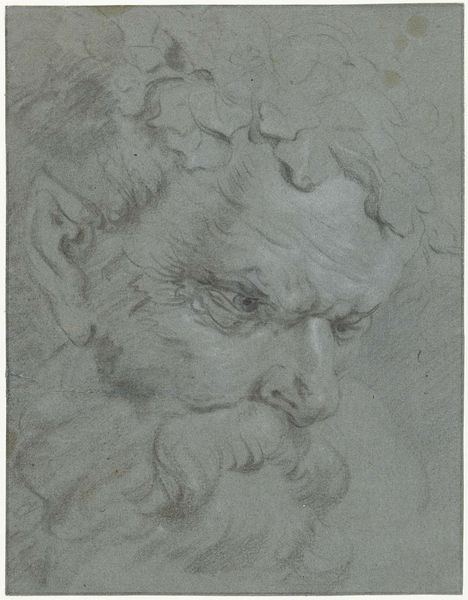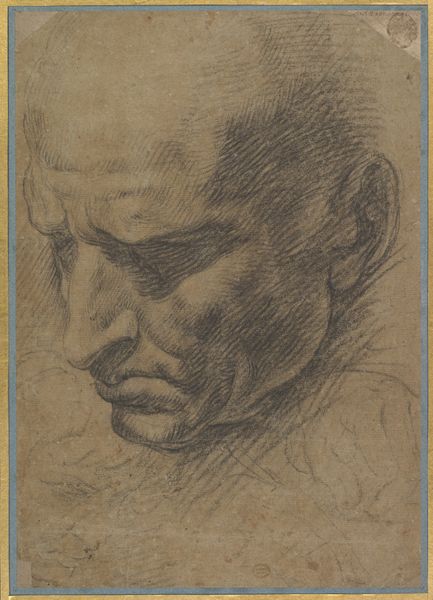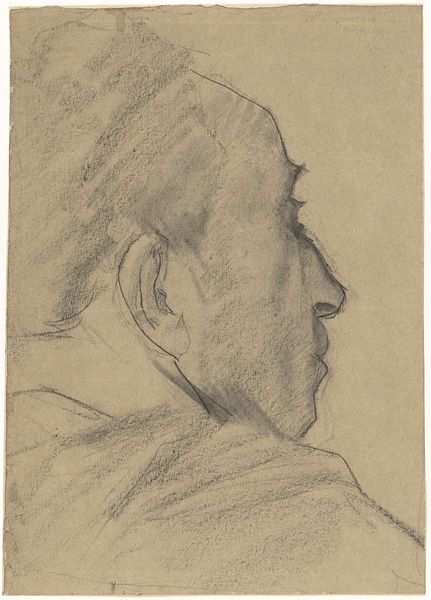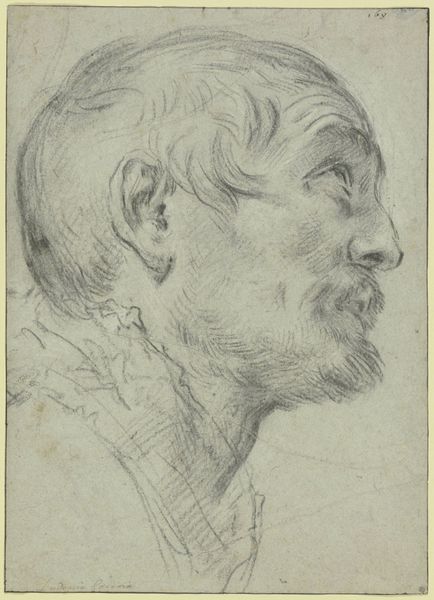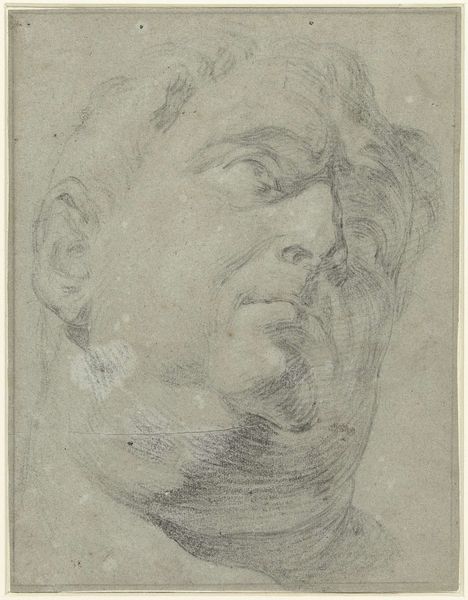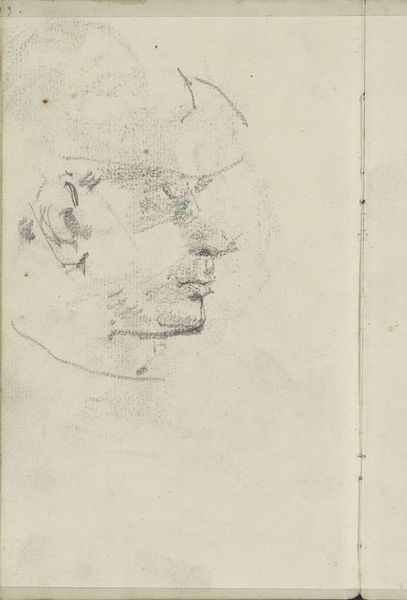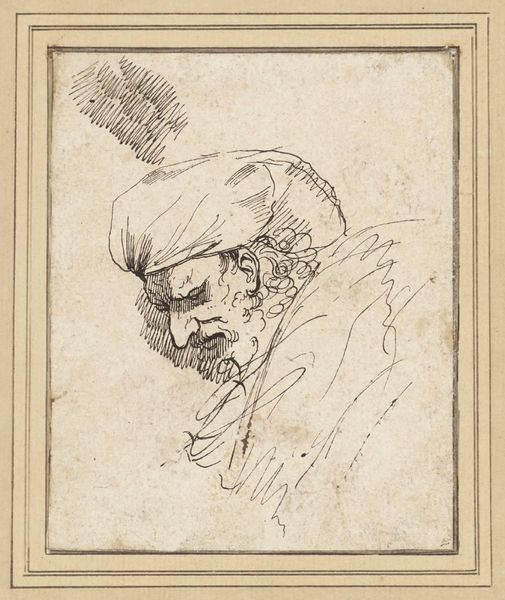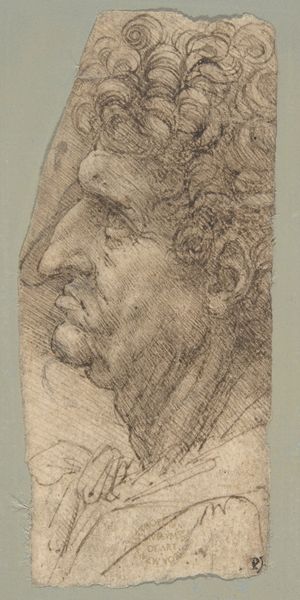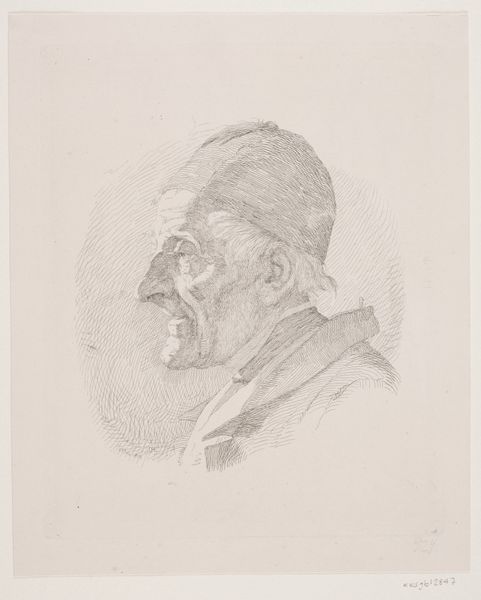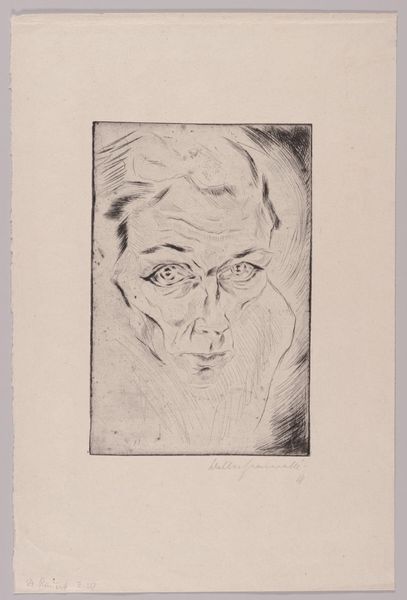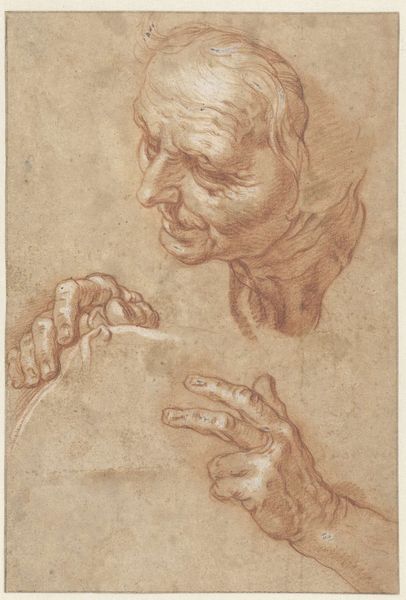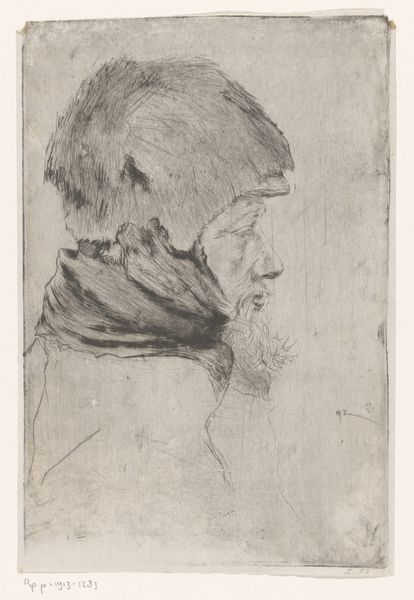
drawing, pencil, graphite, charcoal
#
portrait
#
pencil drawn
#
drawing
#
charcoal drawing
#
figuration
#
form
#
11_renaissance
#
pencil
#
graphite
#
charcoal
#
italian-renaissance
Dimensions: height 244 mm, width 166 mm
Copyright: Rijks Museum: Open Domain
Curator: Standing before us, we have a drawing attributed to Leonardo da Vinci, titled "Head of a Screaming Man," dating back to the period between 1500 and 1600. It resides here at the Rijksmuseum. The sketch employs graphite, charcoal, and pencil. Editor: It's intensely visceral. The stark use of shadow to convey anguish is quite palpable even now. Curator: Indeed. Let's examine the application of material. Note how Da Vinci modulates pressure to construct depth and drama. The textural diversity from the pencil shading against the dark definition of charcoal reveals anatomical and emotional contours. This drawing achieves form through process. Editor: For me, it evokes questions of class and labor. Who was this man, and what circumstances led him to such an extreme emotional state? I wonder about the production of drawings like this during the Renaissance. Were they commissioned studies? Explorations? What dictated the choice to use such easily attainable materials? Curator: I'd suggest it moves beyond a direct depiction into the realm of archetype. Notice the positioning of features—the strained eyes, the taut mouth, the emphasized musculature around the jaw. This evokes classic Renaissance interests in structure, order and idealized proportions – not documentation, but refined expressiveness. Editor: Perhaps, but even archetypes are constructed through social realities. Did Da Vinci seek a subject ravaged by circumstance, reflecting hardships of early modernity? Curator: I suggest such readings risk reducing form into mere content. By observing composition and materiality— the very qualities through which he transforms agony into masterful line work. Editor: And by recognizing materials and its likely socioeconomic circumstances—it acknowledges real circumstances transformed through vision. Both converge. Curator: Ultimately, both aspects guide an interpretation in its complex interplay. Editor: Illuminating different paths and purposes—art endures regardless.
Comments
No comments
Be the first to comment and join the conversation on the ultimate creative platform.
